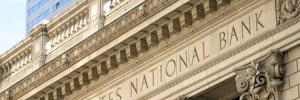Tavex uses cookies to ensure website functionality and improve your user experience. Collecting data from cookies helps us provide the best experience for you, keeps your account secure and allows us to personalise advert content. You can find out more in our cookie policy.
Please select what cookies you allow us to use
Cookies are small files of letters and digits downloaded and saved on your computer or another device (for instance, a mobile phone, a tablet) and saved in your browser while you visit a website. They can be used to track the pages you visit on the website, save the information you enter or remember your preferences such as language settings as long as you’re browsing the website.
| Cookie name | Cookie description | Cookie duration |
|---|---|---|
| tavex_cookie_consent | Stores cookie consent options selected | 60 weeks |
| tavex_customer | Tavex customer ID | 30 days |
| wp-wpml_current_language | Stores selected language | 1 day |
| AWSALB | AWS ALB sticky session cookie | 6 days |
| AWSALBCORS | AWS ALB sticky session cookie | 6 days |
| NO_CACHE | Used to disable page caching | 1 day |
| PHPSESSID | Identifier for PHP session | Session |
| latest_news | Helps to keep notifications relevant by storing the latest news shown | 29 days |
| latest_news_flash | Helps to keep notifications relevant by storing the latest news shown | 29 days |
| tavex_recently_viewed_products | List of recently viewed products | 1 day |
| tavex_compare_amount | Number of items in product comparison view | 1 day |
| Cookie name | Cookie description | Cookie duration |
|---|---|---|
| chart-widget-tab-*-*-* | Remembers last chart options (i.e currency, time period, etc) | 29 days |
| archive_layout | Stores selected product layout on category pages | 1 day |
| Cookie name | Cookie description | Cookie duration |
|---|---|---|
| cartstack.com-* | Used for tracking abandoned shopping carts | 1 year |
| _omappvp | Used by OptinMonster for determining new vs. returning visitors. Expires in 11 years | 11 years |
| _omappvs | Used by OptinMonster for determining when a new visitor becomes a returning visitor | Session |
| om* | Used by OptinMonster to track interactions with campaigns | Persistent |
| Cookie name | Cookie description | Cookie duration |
|---|---|---|
| _ga | Used to distinguish users | 2 years |
| _gid | Used to distinguish users | 24 hours |
| _ga_* | Used to persist session state | 2 years |
| _gac_* | Contains campaign related information | 90 days |
| _gat_gtag_* | Used to throttle request rate | 1 minute |
| _fbc | Facebook advertisement cookie | 2 years |
| _fbp | Facebook cookie for distinguishing unique users | 2 years |
The 'Calm' Period of the Financial Crisis May Be Over

Financial crises often happen in stages, with quiet periods in between. But the calm period we’ve experienced since the spring banking crisis of 2023 is ending. Economist and investment banker James Rickards says we’re now moving into the second phase of the financial crisis.
The following explains (in other words) some of Rickards’ thoughts, published on the Daily Reckoning:
Many may remember the banking crisis that lasted from March to May 2023.
It all started on March 8 with the failure of the obscure Silvergate Bank. The next day, March 9, Silicon Valley Bank (SVB), an already much larger bank, suffered the same fate. $120 billion in uninsured deposits were held by SVB.
The Federal Deposit Insurance Corporation does not protect bank deposits exceeding $250,000 (FDIC). Any money over that cap would be lost by the depositors. Hundreds of Silicon Valley firms that had bank deposits there would have collapsed as a result.
Larger companies such as Cisco had also placed deposits in the bank. There was also a big cryptocurrency exchange that kept its assets there. These corporations would have had to endure extremely significant losses if SVB had not been salvaged.
The FDIC declared on March 9 that the deposits were not covered and that the depositors would get non-existent liquidity and certificates of undetermined value as compensation.
However, on March 10, the FDIC announced that all deposits would be covered, reversing its previous position. The Federal Reserve (central bank) stepped in and declared that it would purchase all US Treasuries at face value from the banks, even though the banks assets had depreciated by 80%.
One of the Biggest Rescue Operations in History

Signature Bank, a New York-based institution with connections to the cryptocurrency market, faced closure on Sunday night of the same week, marking another troubling event in the ongoing crisis. On March 19, the Swiss National Bank intervened, compelling UBS and Credit Suisse to merge, with Credit Suisse teetering on the edge of insolvency despite being one of the world’s largest banks.
The final blow came on May 1 when First Republic Bank, boasting assets of $225 billion, collapsed. Government intervention led to its closure and subsequent acquisition by JPMorgan.
It stood as one of the most significant bailouts in US history, yet its reception among stock investors appeared lukewarm at best. The underlying issue lies in this: If you have guaranteed all the deposits and agree to finance the bonds at their face value, what tools do you have left? What can be done in the next crisis that hasn’t already been done? Nationalise the banks?

Following the collapse of five banks within a span of two months and a trillion-dollar government bailout, there arose a semblance of resolution to the crisis. However, this semblance is deceptive. As I emphasised at the time, the crisis is far from concluded. We’ve only traversed halfway through its depths.
Investors are displaying a sense of complacency, believing that the banking crisis is over. However, this assumption is misguided. History demonstrates that significant financial crises unfold in phases, often characterised by a deceptively tranquil interlude between initial disturbances and critical stages.
A Slow-Motion Crisis Can Suddenly Become Fast

This pattern is evident in historical instances such as 1994, where after what seemed like the resolution of the spring bond market turbulence, the situation escalated dramatically in December, leading to the Mexican tequila crisis.
Similarly, in 1997-1998, as the Asian financial crisis seemed to ease by the winter of 1998, it abruptly morphed into the Russian financial crisis in August and September of the subsequent year.
The global financial crisis also followed this pattern. Initial signs of strain on the system in August 2007 appeared to be contained. However, this was followed by the collapses of Bear Stearns, Fannie Mae, Freddie Mac, and Lehman Brothers between March and September 2008.
The typical duration of such financial crises has been around 20 months
With the banking crisis now 12 months in, it may persist for another eight months or possibly even longer.
However, there’s a possibility that this crisis could escalate to a critical stage sooner. This is due to the rapid nature of bank runs facilitated by technology. With the ability to transfer large sums of money instantly, such as through a smartphone while waiting in line at McDonald’s, the traditional need to queue at a bank is eliminated.
In essence, the second phase of the crisis may manifest sooner and with greater intensity. What is presently unfolding in slow motion could swiftly evolve into a real-time crisis.
The Future of the Dollar is Also at Stake

Moreover, regulators are responding more swiftly this time around, having witnessed similar scenarios unfold previously. This raises doubts about whether regulators have any remaining tools at their disposal, given that essentially everything is already guaranteed. They seem to have exhausted all possible strategies.
This situation could evolve into a crisis where panic shifts from the banks to the dollar itself. If savers lose faith in the Federal Reserve (a scenario that seems increasingly likely), the repercussions will extend beyond the banks to the stability of the dollar. In such a scenario, gold emerges as the sole defence.
It’s crucial to differentiate between the collapse of individual banks and a systemic banking crisis
When a bank fails, creditors and depositors typically receive protection, while shareholders often incur significant losses.
However, a systemic banking crisis presents a distinct challenge. It spreads swiftly from one bank to another, necessitating the simultaneous rescue of the entire system. Measures such as deposit guarantees and extensive money creation through quantitative easing may be employed to address this.
In the most dire circumstances, banks may need to be closed (as was done in 1933) or brought under national control. Some countries have also opted for nationalisation at various points in time.
Has Stage 2 Arrived?
The collapse of an individual bank or the onset of a systemic crisis can occur suddenly, with triggers often surrounded in mystery and rooted largely in psychological factors, despite long-standing fundamental issues.
It appears that the period of tranquility is drawing to a close, signalling the onset of the second phase of the banking crisis
In February, New York Community Bancorp (NYCB) incurred losses exceeding $2 billion on commercial real estate loans, pushing them perilously close to the brink of collapse.
On March 6, the bank successfully raised $1 billion from the markets, with assistance from former Treasury Secretary Steven Mnuchin and Citadel hedge fund manager Ken Griffin. While this move saved NYCB, it served as an early warning of impending challenges.
NYCB isn’t the sole institution facing significant losses on commercial real estate loans. These losses are lurking on the balance sheets of banks across the United States.
As the second stage of the crisis looms, its impact on financial institutions and the broader stock market is poised to be severe. While we may not be able to avert a crisis entirely, we can proactively anticipate it and take necessary measures to safeguard assets.
Key Takeaways
- Financial crises progress in stages, often punctuated by periods of calm. However, the tranquility experienced since the spring banking crisis of 2023 may be ending, indicating the onset of the second phase of the financial downturn.
- The banking crisis of 2023 saw significant events such as the collapse of several banks and a trillion-dollar government bailout, yet the crisis is far from over. History shows that financial crises unfold in phases, and we may only be halfway through.
- The duration of financial crises typically spans around 20 months. With the banking crisis already 12 months in, it may persist for another eight months or possibly even longer. Additionally, advancements in technology may accelerate the crisis, turning a slow-motion situation into a real-time catastrophe.
- Regulators are responding swiftly, but doubts linger about the effectiveness of their interventions. The crisis could escalate to affect the stability of the dollar, potentially leading to a shift in panic from investment banks to the currency itself.
- It’s essential to distinguish between the collapse of individual banks and a systemic banking crisis. Measures such as deposit guarantees and quantitative easing may be employed, but in dire circumstances, banks may need to be closed or nationalised.
- Recent events, such as New York Community Bancorp’s significant losses on commercial real estate loans and its subsequent capital raise, serve as early warnings of impending challenges. As the second stage of the crisis approaches, its impact on financial institutions and the broader stock market could be severe. Despite the challenges, proactive measures can be taken to safeguard assets.

















